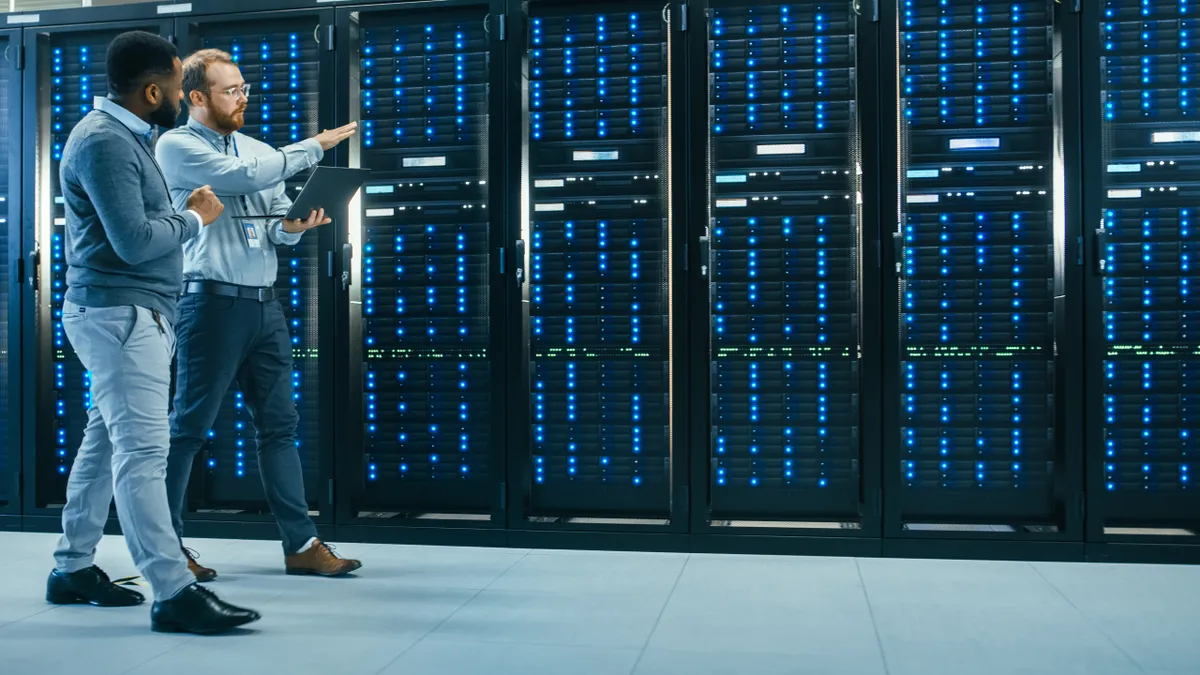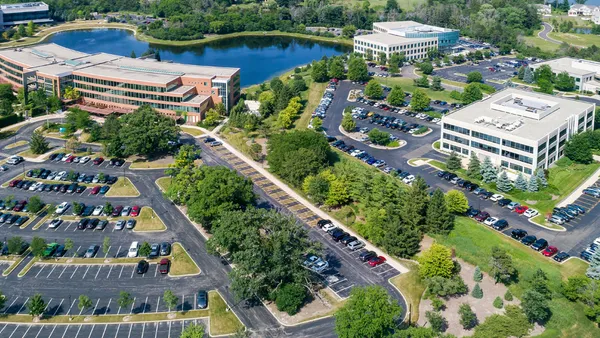Dive Brief:
- Data center demand remained strong throughout 2023, with a shift toward secondary and other emerging markets due to a limited supply of power and land, according to JLL’s H2 2023 North American data center report.
- New AI-focused data centers do not require backup power and can occupy a smaller physical footprint than traditional enterprise facilities, but require significantly more power. In response to limited power availability from the public grid, data center operators are increasingly exploring microgrids that can integrate renewable energy and provide resiliency from disruptions, JLL says.
- As occupiers look to find capacity in new construction, with significant amounts of unleased capacity not coming online for at least another two years in primary markets, they are also securing facilities management contracts earlier in the planning phase to offset challenges with recruiting and retaining qualified talent. “They are looking for FM agreements to try and ensure talent availability, engagement in pre-construction activities and clarity in operating costs, moving forward,” Matt Landek, managing director of data center and telecom at JLL, said in an email.
Dive Insight:
Data center demand shows no signs of waning, despite power availability and delivery timeline concerns that continue to damper absorption, JLL says, noting that most of the capacity coming online in 2024 is already preleased. Thus, organizations must plan ahead in their IT strategy and commit to space and power on accelerated timelines to find capacity. As a result, most of the net leasing in the second half of 2023 occurred in under-construction or planned product, rather than existing inventory, with pre-leasing activity in Northern Virginia and Phoenix propelling primary market activity to three times its size in the first half of 2023.
Secondary and emerging markets have been increasing their share of leasing activity in the past two to three years and are “critical to countering supply challenges,” JLL says, noting that these markets can be more cost-effective and have shorter power-delivery timelines. But primary data markets are still leading the way, with a record 4.3 gigawatts of transactions signed in 2023, driven by 3.4 GW of transactions signed in the second half alone. Northern Virginia led these markets with 1.6 GW of transaction volume in 2023, followed by Phoenix, which signed 784 megawatts of new capacity, according to the report.
In addition, new demand from generative AI requires extreme amounts of power, with some data centers requiring up to 300 to 500 MW of energy, JLL says. This demand has led to significant deployment in the second half of 2023, particularly in New York and New Jersey, the report notes.
But many developers and enterprises are realizing their existing data center designs do not support AI’s large power demands and are unable to host and manage these applications within their own facilities or servers. As a result, they are turning to colocation providers, which are rapidly upgrading their infrastructure to meet demand, while hyperscalers are expanding their footprint with AI-ready data centers that can provide these services to end users, JLL says.
Cloud and hyperscale demand continues to dominate in larger markets, creating difficulty for smaller enterprises to find colocation space and power to meet their needs, the report says. The report notes that as cloud usage grows, some enterprise users are evaluating a shift to a “distributed cloud” or outsourcing data center operations due to rising costs, latency and information security concerns.
New construction is only a portion of new data center capacity, however, JLL says, underscoring that existing data centers are also being expanded, both horizontally and vertically, with upgrades to existing infrastructure and on-site power generation making facilities denser and adding capacity.
“Building operations are one component of the overall data center ecosystem. It’s vital to work in partnership with construction and project management, site selection and internal sustainability teams to define the goals of the organization,” Landek said, noting that in colocation facilities, in particular, “there is a partnership aspect that is needed between tenants and building operators to find the proper medium of that set point.”













